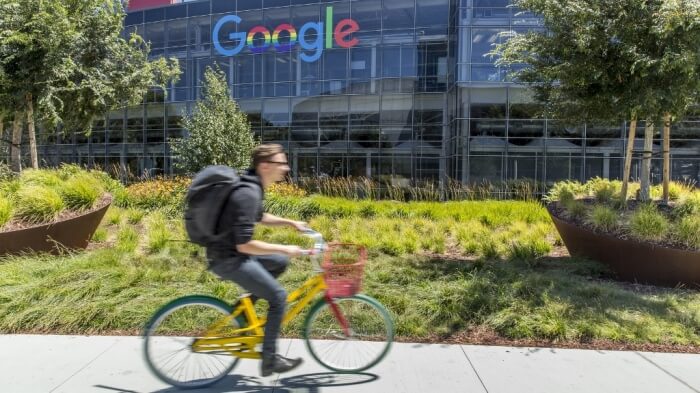How User Experience Improves Your SEO Rankings And Earns You Thousands Of Visits
Improving your website's user experience adds serious weight to its SEO value.

Surely you're tired of hearing that the user experience is important to improve the conversion, but not so much about how it can help you increase your visibility.
Believe it or not, user experience is also decisive for Google to give us a good look and send us thousands of visits.
That's why in this article we explain how this concept affects the positioning of your website and, most importantly, how to work to improve our positioning.
Because don't forget that...
To care about the user is to care about Google!
SEO old school vs SEO based on user experience
In case you don't know too much about SEO, let me put you in the background.
For years the Google algorithm was relatively easy to fool. With a ton of links (no matter how spammy they were), and repeating a keyword like parrot, almost everything positioned.
But Google has been learning.
We have good news for users and some bad news for many SEO specialists: Google has grown.
Until now, if we wanted to create content that would position, we had to write it with Google in mind.
Now, with the changes you'll see later, the main goal is the user.
If we write thinking about answering searches in the best way, our content will have much more chances of positioning at the top.
Clarification
This does not mean that you can type and cross your fingers to make Google like it; There is a whole world behind link building and on-page optimisation.
Even many blackhat strategies still work... but, in the long term, the important thing is that you keep this idea:
Improving the user experience, and that includes satisfying your search intent, is the best SEO optimisation you can do
How Google measures user experience
To understand it, let's go to the basis of how the search engine works.
- A person has a need for information and expresses it through a search.
- Google, whose romantic mission is "to organise the world’s information and make it universally accessible and useful" (we are not talking about money), offers a range of possible answers in the form of websites.
- The different pages, through their content, try to provide the information that the user is looking for.
- After visiting a page, the user can be satisfied with his search or return to the results for another answer.
Or what is the same:
Google's goal is to offer the best possible result for each search (query).
Until now I have chosen the best answers based on links and content. Now, more and more, it offers it based on the behaviour of users who have done similar searches before.
Rankbrain: How does Google decide what results to offer now?

I hope you have read the last paragraph well because it is the key to the functioning of Google and where the future of SEO based on the UX (user experience) goes.
Under the name Rankbrain hides the machine learning technology that modifies the order of results depending on the behaviour of previous users, among other factors.
Rankbrain means more changes, but one stands out above all: the grouping of keywords into concepts or search intentions.
Let's see it with an example:
Imagine three different users typing in Google:
- "Best restaurants in Madrid".
- "Where to eat well in Madrid".
- "Places to have dinner in the capital of Spain".
The three users write it in three different ways but in the bare essentials of the search intention is the same. Google now understands it and offers very similar results.
Another example.
Think of searches like "first division", "the league" or "Premier league"... These are different ways of expressing the same need for information.
Until not long ago the best way to optimise SEO was by creating a page for each of the forms of expressing the search.
Now, what works best is an in-depth content that covers all the semantic amplitude on the main query.
To give you an idea, in the example of "best restaurants in Madrid", removing pages with very high authority such as Tripadvisor or newspapers, the new results that are positioned are articles with 10,000 and 12,000 words.
It seems that, finally, content is king.
1. But... is it only the amount of content that matters?
Not at all, another difference Rankbrain has brought is that in each sector the positioning factors change.
Depending on the situation, there are different criteria:
The links.
The freshness of the content.
The length (in some you need very long texts to position, in others 300 words is enough).
Etc.
But the most important thing is that this is determined by the behaviour of the users.
If Google sees that the results that most satisfy the users are articles of 200 words, it will not be necessary to write the Bible in verse.
Welcome to the artificial intelligence applied to the SEO world.
2. Relevance Score, the note that Google puts to your page
If you have used Google Adwords in your e-commerce you will know that each ad is assigned a "quality level" depending on several factors:
- CTR: click through rate, the number of clicks per 100 impressions. And the difference between expected CTR and achieved CTR.
- Relevance: relationship between the content of the page and the keyword for which the ad has been activated.
- Destination page experience: how useful your result is to the user.
Although no one outside the Google office knows exactly the ingredients of this quality score, it is assumed that there are more factors that affect it, such as the historical behaviour of your ads.
3. The organic version of the Quality Score of Adwords
The quality score is used by Google to offer one ad or another. But look at one key detail:
You don't need links to evaluate a result.
That same philosophy is what organic positioning is aimed at.
To do this (and always talking about assumptions because Google's recipe is like Coca Cola), use the Relevance Score.
Rankbrain assigns a value to each page, the Relevance Score. It determines how well a search intention satisfies and, obviously, the higher the score the better the position.
Important metrics to optimise for Rankbrain
The "create the best content" tip sounds as nice as it sounds empty. That's why we're going to try to summarise what's most important in order to improve the score that Google gives to your pages.
1. Content length
Google still only sees text but, as we saw before, not always the longest content is the best.
Take a look at the pages that appear in top 10 and look at the number of words they use.
You can ignore websites with a lot of authority and look at those with the most recent publication date. Its average length is what Google considers most suitable for new content and should serve as a reference.
To see this we recommend the extension of Chrome SEO Quake, with it you can see both the number of words and density.
2. CTR expected VS CTR achieved
A result that appears in the first position is expected to get the most clicks.
According to this graph, in desktop the result #1 takes 26.9% of the clicks while in mobile that drops to 20.52%.
The percentage drops in each position until the number 10 receives only 1% of the clicks.
Google assigns an expected CTR for each position. If a result gets a CTR higher than expected, it will likely go up.
On the other hand, if your final CTR is lower than it should be because of the position it has been shown in, the trend will fall.
Your result should stand out in the SERP and for this you can use the typical tricks:
- Microcopy: In the meta description there must be a persuasive text and a call to action.
- Emojis: The eyes usually look for something that stands out, that is different and a smiley face in the middle of the results page, is it.
- Rich snippets: The stars, work very well.
But once we get the click? What comes next?
3. Pogo stickingy dwell time
A user who searches Google usually likes to review multiple pages. This behavior of visiting a page, going back to the results, clicking on the next one, going back to the results... is known as pogo sticking.
The average pogo adhesion of your site should not be distanced from the average number of pogos or jumps a user makes for each specific query.
If a lot of people visit your website but no one stays, bad business.
Once you understand this, the concept of dwell time won't be a problem for you.
Waiting time is the time when the visit is delayed before the next pogo. That is, before returning to the results page
Someone may find your content very good and yet go back to Google to go deeper.
Greater dwell time is always positive.
4. Rebound rate and page time
All these metrics are often confused, so let's see if we can clarify these concepts for you:
The bounce rate is the percentage of sessions that only visit one page of your site. It doesn't matter if they have closed the window or returned to Google after 2 seconds or half an hour, if they only see a url it is considered a bounce.
On the other hand, page time is the exact minutes a user spends looking at content before going anywhere else. You can improve both metrics with the services of a user interface design company.
A Trick to Improve User Experience Metrics and Improve Your Store's SEO
The person who arrives at your store needs to find something he or she likes right away. If they don't, they won't hesitate to click back for an alternative.
Not all users are the same, so guessing with our first trick is complicated.
An alternative is to give the visitor the initiative and let them be the one who says what they want to see.
How?
With a well visible internal search engine. 😉
Not only will you improve the user experience, but your store will also sell more.
Want to try it?
Go to doofinder.com and start your 30 day free trial...
Your readers and Google will thank you.
Chiara Algarotti is a marketing specialist at Doofinder.
Doofinder is a powerful, quick and intuitive search engine that will help you to improve your online store's sales. You can lose lots of sales because your users cannot find what they are looking for, even though it is there.
Doofinder will show relevant results with a few keystrokes, as well as this, it will learn from your user's searches and improve the buying process.
Thanks for signing up to Minutehack alerts.
Brilliant editorials heading your way soon.
Okay, Thanks!

